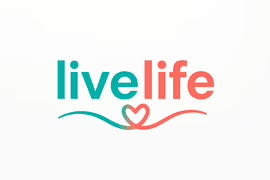Navigate Debt in Kenya’s Economy
An interactive guide to understanding your finances, choosing the right credit, and building a secure future in a high cost-of-living environment.
Understanding the Economic Landscape
Kenya’s economy presents both opportunities and challenges. High inflation erodes purchasing power, while significant public debt can impact public services. This section visualizes these key factors to help you understand the environment you’re navigating.
Inflation’s Impact: Rising Cost of Living
The Consumer Price Index (CPI) shows how the average price of goods and services changes over time. A rising CPI means your money buys less.
Kenya’s Public Debt Burden
As of June 2024, public debt was 70% of GDP, well above the IMF’s recommended 30% threshold for debt service to revenue ratio.
Explore Your Debt Options
Choosing the right type of loan is critical. Each option has different costs, terms, and risks. Click on a loan type below to compare them and make an informed decision.
Master Your Money: Essential Strategies
Managing debt effectively requires a plan. Use these interactive tools to create a budget, choose a repayment strategy, and understand the importance of an emergency fund.
The 50/30/20 Budget Rule
Allocate your after-tax income: 50% for Needs, 30% for Wants, and 20% for Savings & Debt Repayment. Enter your monthly income to see your breakdown.
Smart Debt Repayment
Choose a strategy to tackle multiple debts. The “Avalanche” method saves more on interest, while the “Snowball” method provides psychological wins.
Find Help & Know Your Rights
You’re not alone. Understand how to check your credit score, negotiate with lenders, and know your legal rights as a borrower in Kenya.
Understanding Your CRB Score
Your credit score determines your access to loans. Scores range from 250 (Very High Risk) to 900 (Very Low Risk).
- 713-900: Very Low Risk
- 677-712: Low Risk
- 641-676: Average Risk
- 574-640: High Risk
- 250-573: Very High Risk
Check your status via Metropol (*433#), Transunion (SMS to 21272), or Credit Info.
Your Rights as a Borrower
- Transparency: Lenders must disclose all costs and terms.
- Fair Collection: No harassment or public shaming is allowed.
- Data Protection: Your consent is needed to share data. Defaults under Ksh 1,000 cannot be reported to CRBs.
- Rate Changes: Banks need official approval to raise rates on existing loans.
- Right to Dispute: You can challenge debts and demand validation.
Negotiating with Creditors
If you’re struggling, communicate with your lender. You can negotiate for:
- Lower interest rates.
- A temporary pause on payments (forbearance).
- A revised, more manageable repayment plan.
- A reduced lump-sum settlement in severe cases.
Always get any new agreement in writing before making a payment.



